I absolutely love classic movies. And by classic, I mean movies that would appear on TCM, not AMC. It’s got to be at least 50 years old to count in my book. Sure, there are new classics in every generation, but not all of them will make the long-term classic movie cut.
I’m raising my kids to love classic movies, too. Not just because they’re good stories, but because the slower pacing, more nuanced acting, and fewer explosions provide an important balance to the loud, frenetic pace of kids’ TV and video games. If they can learn to get into a classic movie, I think they stand a better chance of being able to get into a newspaper, a history book, and a weeks-long scientific experiment later on, and that’s all to the good.
But if you want to really hook kids on the classics, you’ve got to know where to start. Classic movies, like literary classics and classical music, come in wide variety of forms, and some are inherently more kid-friendly than others. If the first black & white movie you show a kid is Camille with Greta Garbo, they’re going to run screaming the next time you suggest something made before 1980.
So here are my suggestions for a primer course in classic movies. Be sure to watch these WITH the kids in your life, whether you’ve never seen them, or you’ve seen them a hundred times. It’s impossible not to laugh at the jokes, thrill at the action, and sigh with satisfaction when you’re seeing it through new eyes.
10 CLASSIC MOVIES TO SHARE WITH KIDS
 1. The Court Jester (1956)–Danny Kaye is at his goofy, flexible, hilarious best in this send-up of medieval court adventures. The cast is loaded with other all-stars, including Basil Rathbone (aka Sherlock Holmes) as a smarmy villain, Glynis Johns (aka Mrs “Sister Suffragette” Banks in Mary Poppins) as the clever serving girl who becomes Kaye’s love interest, and a very young Angela Lansbury (yes, the Jessica Fletcher one) makes her film debut as the princess. The songs are funny, the slapstick is funny, the action scenes are even funny. It’s in color, but it’s got everything good that a classic movie can offer, and it stands up well to re-watching as an adult.
1. The Court Jester (1956)–Danny Kaye is at his goofy, flexible, hilarious best in this send-up of medieval court adventures. The cast is loaded with other all-stars, including Basil Rathbone (aka Sherlock Holmes) as a smarmy villain, Glynis Johns (aka Mrs “Sister Suffragette” Banks in Mary Poppins) as the clever serving girl who becomes Kaye’s love interest, and a very young Angela Lansbury (yes, the Jessica Fletcher one) makes her film debut as the princess. The songs are funny, the slapstick is funny, the action scenes are even funny. It’s in color, but it’s got everything good that a classic movie can offer, and it stands up well to re-watching as an adult.
 2. Charlie Chaplin and Buster Keaton silent shorts–I’m not going to put a specific title in here, because any compilation of short films by these two comic geniuses (streaming Netflix has several available) will have treasures to delight kids of any age. Don’t let the kids sway you with complaints about the black & white film or the music-only accompaniment–these are straight-up hysterical, and with a little guidance, kids pick up on the unfolding physical gags all on their own. So many of Chaplin’ and Keaton’s bits have been recycled over the years that it’s nice to see them in context again, especially with a kid who hasn’t been jaded to their charms by the knock-offs.
2. Charlie Chaplin and Buster Keaton silent shorts–I’m not going to put a specific title in here, because any compilation of short films by these two comic geniuses (streaming Netflix has several available) will have treasures to delight kids of any age. Don’t let the kids sway you with complaints about the black & white film or the music-only accompaniment–these are straight-up hysterical, and with a little guidance, kids pick up on the unfolding physical gags all on their own. So many of Chaplin’ and Keaton’s bits have been recycled over the years that it’s nice to see them in context again, especially with a kid who hasn’t been jaded to their charms by the knock-offs.
 3. National Velvet (1944)–Elizabeth Taylor made her screen debut in this movie about horses, with Mickey Rooney as a young, charming trainer. I’ve seen generation after generation of girls (especially, though not exclusively) go gaga over the gorgeous horses, the exciting race sequences, and the wide-open emotional heart of this film. Taylor’s young beauty and potential absolutely sparkle.
3. National Velvet (1944)–Elizabeth Taylor made her screen debut in this movie about horses, with Mickey Rooney as a young, charming trainer. I’ve seen generation after generation of girls (especially, though not exclusively) go gaga over the gorgeous horses, the exciting race sequences, and the wide-open emotional heart of this film. Taylor’s young beauty and potential absolutely sparkle.
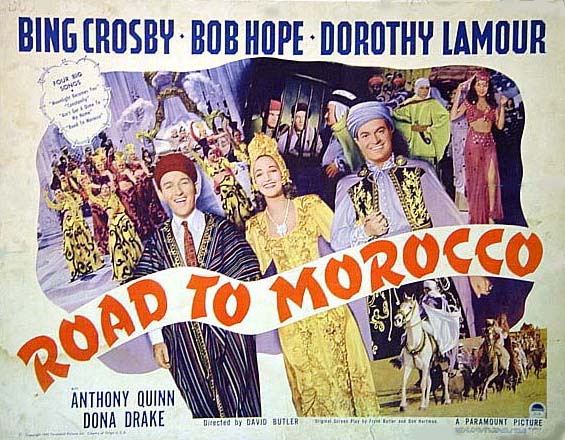 4. Road to Morocco (1942)–If you aren’t familiar with the Bing Crosby/Bob Hope “Road” movie series, you’ve really been missing out. Morocco‘s a personal favorite, but any of them you can get your hands on are wonderful. There’s plenty of overt humor–mistaken identities, abductions, French door farce, etc.–but a lot of the jokes that fly in fast, companionable crossfire between Hope and Crosby are sly and referential, much like Bugs Bunny cartoons of the same time period, aimed at the adults. The more you watch these films, the more things you (and the kids) will find funny.
4. Road to Morocco (1942)–If you aren’t familiar with the Bing Crosby/Bob Hope “Road” movie series, you’ve really been missing out. Morocco‘s a personal favorite, but any of them you can get your hands on are wonderful. There’s plenty of overt humor–mistaken identities, abductions, French door farce, etc.–but a lot of the jokes that fly in fast, companionable crossfire between Hope and Crosby are sly and referential, much like Bugs Bunny cartoons of the same time period, aimed at the adults. The more you watch these films, the more things you (and the kids) will find funny.
 5. North by Northwest (1959)–This is about as good a “Child’s First Hitchcock” as I can come up with. There are elements of the plot that may escape them, unless an adult’s on hand to string things together, but the action scenes are good, the plot twists are hair-raising, and Mount Rushmore and the UN building in New York suddenly become much more exciting destinations for a family vacation. There’s plenty of Hitchcockian suspense, but none of the phobia-inducing stuff of The Birds or Psycho, or the more adult innuendos of To Catch A Thief.
5. North by Northwest (1959)–This is about as good a “Child’s First Hitchcock” as I can come up with. There are elements of the plot that may escape them, unless an adult’s on hand to string things together, but the action scenes are good, the plot twists are hair-raising, and Mount Rushmore and the UN building in New York suddenly become much more exciting destinations for a family vacation. There’s plenty of Hitchcockian suspense, but none of the phobia-inducing stuff of The Birds or Psycho, or the more adult innuendos of To Catch A Thief.
 6. The Pink Panther (1963)–This one will be 50 years old next year, so I’m going to let it slide in under the wire, because it’s so fantastic. Peter Sellers blew the doors off cinema comedy all over again with his clumsy, silly, terribly clever portrayal of the star-crossed Inspector Clouseau. Just be sure to warn the kids that the Pink Panther of cartoon fame does not make an appearance in the movie (though those cartoons are also classics worth watching, and they’re readily available on Netflix too).
6. The Pink Panther (1963)–This one will be 50 years old next year, so I’m going to let it slide in under the wire, because it’s so fantastic. Peter Sellers blew the doors off cinema comedy all over again with his clumsy, silly, terribly clever portrayal of the star-crossed Inspector Clouseau. Just be sure to warn the kids that the Pink Panther of cartoon fame does not make an appearance in the movie (though those cartoons are also classics worth watching, and they’re readily available on Netflix too).
 7. Duck Soup (1933)–No list of family-friendly classic movies would be complete without the Marx Brothers, and though the political story line and some of the fast repartée may fly well above young kids’ cruising altitude, the farce and slapstick are undeniably fun. Like the Hope/Crosby Road movies, Marx Brothers’ schtick just gets better and better with age.
7. Duck Soup (1933)–No list of family-friendly classic movies would be complete without the Marx Brothers, and though the political story line and some of the fast repartée may fly well above young kids’ cruising altitude, the farce and slapstick are undeniably fun. Like the Hope/Crosby Road movies, Marx Brothers’ schtick just gets better and better with age.
 8. Arsenic and Old Lace (1944)–This movie adaptation of the classic screen play was directed by Frank Capra, but despite the running theme of insane relatives and casual murder, it’s actually less intense and depressing than Capra’s It’s A Wonderful Life. Comparing this screwball, wacky Cary Grant to the wry, suave Cary Grant of his Hitchcock days may give you whiplash, but he absolutely sells the “normal guy in abnormal circumstances” farce. Kids will need the Boris Karloff jokes explained, but other than that, crazy Uncle Teddy “charging the blockhouse” and Grant’s slow meltdown in the face of his family’s obvious oddity are completely winning.
8. Arsenic and Old Lace (1944)–This movie adaptation of the classic screen play was directed by Frank Capra, but despite the running theme of insane relatives and casual murder, it’s actually less intense and depressing than Capra’s It’s A Wonderful Life. Comparing this screwball, wacky Cary Grant to the wry, suave Cary Grant of his Hitchcock days may give you whiplash, but he absolutely sells the “normal guy in abnormal circumstances” farce. Kids will need the Boris Karloff jokes explained, but other than that, crazy Uncle Teddy “charging the blockhouse” and Grant’s slow meltdown in the face of his family’s obvious oddity are completely winning.
 9. The Music Man (1962)–This one hits the 50-year mark this year, but it’s so timeless, you can hardly tell. If the kids are familiar with the medieval morality tale of The Pied Piper of Hamelin, they’ll get more out of this glorious movie musical. The sudden-singing feature of musicals seems somehow less remarkable (or annoying, depending on how you are with musicals) in this film because music is part of the story. Robert Preston is a funny, wily snake charmer, and Shirley Jones (of later Partridge Family fame) plays Marion the Librarian with uncommon spirit and spine. Even little Ronnie Howard (yeah, THAT Ron Howard) is adorably perfect with his Sylvester-the-Cat-like lisp. This movie just never gets old.
9. The Music Man (1962)–This one hits the 50-year mark this year, but it’s so timeless, you can hardly tell. If the kids are familiar with the medieval morality tale of The Pied Piper of Hamelin, they’ll get more out of this glorious movie musical. The sudden-singing feature of musicals seems somehow less remarkable (or annoying, depending on how you are with musicals) in this film because music is part of the story. Robert Preston is a funny, wily snake charmer, and Shirley Jones (of later Partridge Family fame) plays Marion the Librarian with uncommon spirit and spine. Even little Ronnie Howard (yeah, THAT Ron Howard) is adorably perfect with his Sylvester-the-Cat-like lisp. This movie just never gets old.
 10. Godzilla, King of the Monsters! (1956)–I’m convinced that every kid loves Japanese atomic monster movies–they just don’t know it yet. This is the original film that kicked off the genre, so it’s the best place to start, despite its black & white format. If you can convince the kids to listen through the talking heads parts (this is a peculiarly Japanese thing), there’s actually a whole bunch of stuff about the A-Bomb that cuts right to the heart of the Japanese psychological trauma that still influences their pop culture today, and that could lead to some interesting, deep values discussions with older kids. But if you can’t, you can just fast-forward to the part where Godzilla stomps the living hell out of Tokyo. It’s a crowd-pleaser every time.
10. Godzilla, King of the Monsters! (1956)–I’m convinced that every kid loves Japanese atomic monster movies–they just don’t know it yet. This is the original film that kicked off the genre, so it’s the best place to start, despite its black & white format. If you can convince the kids to listen through the talking heads parts (this is a peculiarly Japanese thing), there’s actually a whole bunch of stuff about the A-Bomb that cuts right to the heart of the Japanese psychological trauma that still influences their pop culture today, and that could lead to some interesting, deep values discussions with older kids. But if you can’t, you can just fast-forward to the part where Godzilla stomps the living hell out of Tokyo. It’s a crowd-pleaser every time.
**UPDATE** Of course, in the way it is with lists, as soon as I posted this I thought of two more films that really deserve to be on the list:
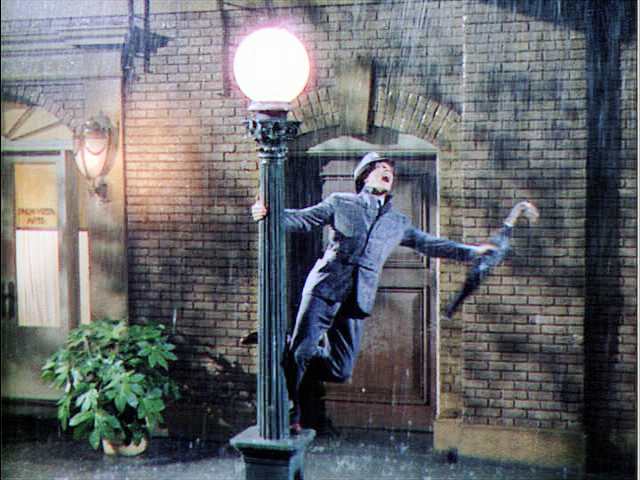 11. Singin’ in the Rain (1952)–Another movie musical that kids really enjoy, with all the silly stunts and fantastic dancing by Gene Kelly. If the songs and the dancing and the funny story don’t get them, “Make ‘Em Laugh” by Donald O’Connor is a tour de force of comic physicality that nobody can resist.
11. Singin’ in the Rain (1952)–Another movie musical that kids really enjoy, with all the silly stunts and fantastic dancing by Gene Kelly. If the songs and the dancing and the funny story don’t get them, “Make ‘Em Laugh” by Donald O’Connor is a tour de force of comic physicality that nobody can resist.
 12. Captain Blood (1935)–It’s hard to choose among the great Errol Flynn swashbuckling movies when they’re all so good. This is my personal favorite, but Robin Hood and The Sea Hawk are just as good. Swords-a-slashing, rope-a-swinging, heroes-a-dashing–everything a young boy (or girl!) could ask for.
12. Captain Blood (1935)–It’s hard to choose among the great Errol Flynn swashbuckling movies when they’re all so good. This is my personal favorite, but Robin Hood and The Sea Hawk are just as good. Swords-a-slashing, rope-a-swinging, heroes-a-dashing–everything a young boy (or girl!) could ask for.
 Political Science
Political Science  2 Comments
2 Comments  But when tragedy strikes, as expected, in the movie, suddenly I’ve got a sobbing pile of six-year-old on my lap. His bony little shoulders are shuddering, and hot tears soak my collar. I stroke his hair and whisper to him that it’s okay, he’s safe, and I know it’s sad, but it’ll get better, until he slowly uncurls and starts watching again. He doesn’t leave the shelter of my arms until the credits begin to roll.
But when tragedy strikes, as expected, in the movie, suddenly I’ve got a sobbing pile of six-year-old on my lap. His bony little shoulders are shuddering, and hot tears soak my collar. I stroke his hair and whisper to him that it’s okay, he’s safe, and I know it’s sad, but it’ll get better, until he slowly uncurls and starts watching again. He doesn’t leave the shelter of my arms until the credits begin to roll. It happened when we went to see Chimpanzee at our favorite bargain theater last weekend. It happened when Claudia and Jamie spent their first lonely night in the Met, as I read From the Mixed-Up Files of Mrs. Basil E. Frankweiler. It’s happened at a variety of TV shows and movies at home.
It happened when we went to see Chimpanzee at our favorite bargain theater last weekend. It happened when Claudia and Jamie spent their first lonely night in the Met, as I read From the Mixed-Up Files of Mrs. Basil E. Frankweiler. It’s happened at a variety of TV shows and movies at home.
 1.
1.  2.
2.  3.
3.  4.
4.  5.
5.  6.
6.  7.
7.  8.
8.  9.
9.  10.
10.  11.
11.  12.
12.  And, sure enough, when we went out to pick
And, sure enough, when we went out to pick  I took the boys to the
I took the boys to the 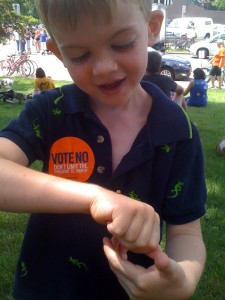

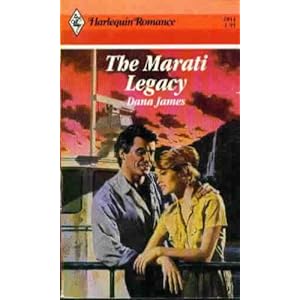 But my real sexual education came courtesy of Harlequin. I found a postcard at the library that said, “Get Free Books!” Naturally, I mailed it in, and soon thereafter, six romance novels arrived in the mail. The first one I read was called
But my real sexual education came courtesy of Harlequin. I found a postcard at the library that said, “Get Free Books!” Naturally, I mailed it in, and soon thereafter, six romance novels arrived in the mail. The first one I read was called 
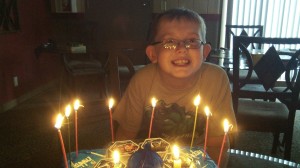
 I’m volunteering for
I’m volunteering for 


